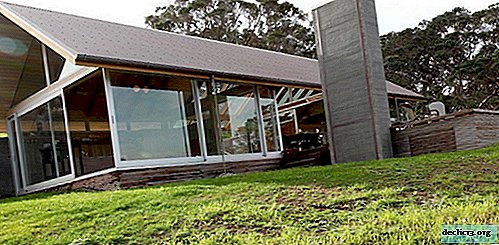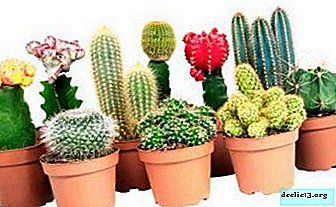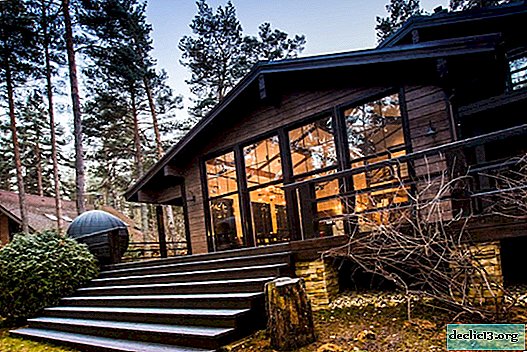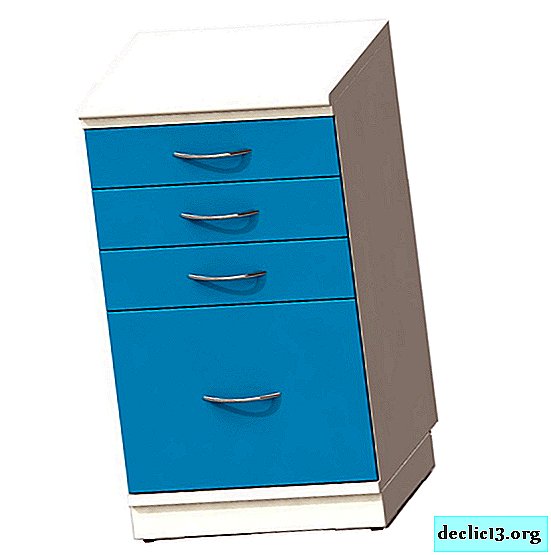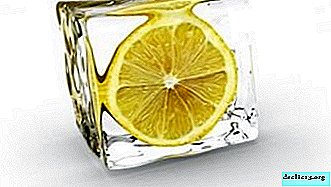Pests and diseases of peperomia - causes and methods for their elimination
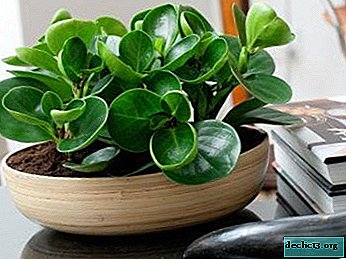
Peperomia is an evergreen plant from the pepper family that migrated from tropical forests to apartments and houses.
Leaves of various shapes and colors will not leave indifferent even the most demanding gardeners.
No peperomia variety is easy to grow, but peperomia is worth the effort.
In the article, we consider possible plant diseases, the causes of their appearance and options for elimination. You will also find out what harmful insects can infect a flower, how to identify a pest and methods of controlling it. What should be the proper care for peperomia.
Diseases
- There are brown spots on the leaves. The cause of the appearance of brown spots can be a sunburn on the leaves of the plant. To eliminate the cause, you must rearrange the peperomia or darken the window with a curtain.
- Leaves turn yellow - Why is this happening? With an excess of fertilizer, the leaves may turn yellow and become rusty. To avoid this condition, it is necessary to top dress according to the recommendations indicated on the package.
- Leaves become lethargic, blacken and fall. Roots rot. The appearance of such a problem indicates excessive watering. The plant is watered as the topsoil dries. Rotten stems are removed, and the place where the rot was sprinkled with sulfur.
- Leaves wrinkle, dry and fall. The reason may be too high a temperature (above 27 degrees) or too low (below 13 degrees), and it is also possible that when the flower was taken care of, the soil was overdried. To eliminate the cause, you need to adjust the temperature in the room and water the plant as the soil dries.
If healthy-looking leaves fall off abruptly and massively, then the room is too cold.
- Bubbling formed on the leaves. Waterlogging. The plant must be allowed to dry, then water less frequently.
- Rot of roots and root neck. As a result of excessive watering, a fungal infection appears. If this happens, the plant is transplanted, washing the roots from the previous soil. If there are black patches on the roots, then they are cut with a sharp knife, and the patches are sprinkled with crushed coal.
Harmful insects
Thrips
 The appearance on the leaves of areas of dead beige fabric indicates the presence of such a pest as thrips. The leaf plate becomes silvery and sticky, and then gradually dies. The cause of the pest is low humidity and high temperature..
The appearance on the leaves of areas of dead beige fabric indicates the presence of such a pest as thrips. The leaf plate becomes silvery and sticky, and then gradually dies. The cause of the pest is low humidity and high temperature..
For prevention, the plant is given a hot shower once every two weeks, and then sprayed with infusions of strongly smelling greens. When larvae appear, the use of insecticides is effective. It should be treated with several drugs with an interval of two weeks.
Adhesive tape for flies will help from adults. People use a mixture of garlic and turpentine or kerosene. The mixture is placed next to the plant.
Mealybug
 The stems and leaves are covered with white pest secretions. Outwardly, they look like lumps of cotton wool. As a result, the leaves are deformed and fall off. Pests can occur due to improper care: lower temperatures, waterlogging of the soil and the use of contaminated soil.
The stems and leaves are covered with white pest secretions. Outwardly, they look like lumps of cotton wool. As a result, the leaves are deformed and fall off. Pests can occur due to improper care: lower temperatures, waterlogging of the soil and the use of contaminated soil.
Plant treatment begins with its full processing:
- The soil is completely changing.
- The roots are inspected, and then thoroughly washed from the previous substrate.
- Affected areas are removed.
- Spray a flower with at least two types of insecticides with an interval of ten days.
If a worm is detected in the early stages, folk remedies can be used. This is spraying with green soap (15 g per 1 liter of water three times in seven days), tobacco or garlic infusion, as well as alcohol processing.
Spider mite
 For prevention, the plant is regularly sprayed with water. Treatment begins with a thorough washing of the plant with a detergent. After that, the flower is well watered and covered with a plastic wrap.
For prevention, the plant is regularly sprayed with water. Treatment begins with a thorough washing of the plant with a detergent. After that, the flower is well watered and covered with a plastic wrap.
The creation of high humidity leads to the death of ticks. If the pest has not been destroyed, insecticides are used. They spray the infected flower.
Nematodes
 On the leaves appear areas of dead tissue of irregular shape. They wither and fall. On the roots, swelling of a dark color is formed. For prevention once a week, the flower is irradiated with a quartz lamp. In the presence of adults, peperomia is placed in a hot bath for 30 minutes. If the plant is badly damaged, it is thrown away with the pot.
On the leaves appear areas of dead tissue of irregular shape. They wither and fall. On the roots, swelling of a dark color is formed. For prevention once a week, the flower is irradiated with a quartz lamp. In the presence of adults, peperomia is placed in a hot bath for 30 minutes. If the plant is badly damaged, it is thrown away with the pot.
Folk remedies for the treatment of nematodes are Dekaris tablets. They water the plant at the rate of one tablet per 1 liter of water.
Shield
 The plant is covered with brown growths, the areas around them turn yellow and die.
The plant is covered with brown growths, the areas around them turn yellow and die.
The flower is wiped with a soapy solution, washed with hot water, the leaves are greased with vegetable oil and hermetically closed in a bag.
Such a pest as a scale insect is very difficult to detect, since it is quite mobile and small insects. The best way to prevent this is to constantly and thoroughly inspect the plant.
Photo
You will see a photo of a plant affected by diseases and harmful insects:



Plant care
- Watering. Damaging to the root system is overmoistening. Care must be taken to ensure that the topsoil does not sour. Watering is carried out only after the soil has dried out well. Peperomia will suffer a short-term drought more easily than the gulf. With excessive moisture, the roots of papermia quickly rot.
In spring and summer, water more often than in winter. If water collects in the pan, it must be drained. Water the plant only with settled water for three days, the temperature of which is two degrees above room temperature.
In the absence of rain or melt water, several granules of citric acid can be added to tap water. It neutralizes excess chlorine and fluoride. - Temperature. Peperomia loves heat and does not tolerate drafts. The optimum temperature for favorable growth is 25 degrees, and in winter it can be reduced to 17 degrees. Cold air causes leaves to fall.
- Lighting. Peperomia does not tolerate direct sunlight, so it is located on the windowsills of the eastern or western side.
Inadequate lighting can cause discoloration and shredding of leaves. - Top dressing. Peperomia fit fertilizers designed for ornamental plants that contain the required amount of nitrogen. There is no dormant period for a plant, therefore it is constantly fertilized. Before use, the fertilizer is bred twice as much as normal. In spring and summer, dressing is done twice a week, and in winter, once a month is enough.
- The soil. It is better to choose loose soil so that it can pass air well. Otherwise, the root system may undergo various types of rot. You can mix sheet soil, humus, peat and sand in a ratio of 2: 1: 1: 0.5.
About the care and propagation of peperomia in the open ground and at home is described in detail here.
Watch the video about plant care:
Peperomia has a variety of color forms. Even in a cramped apartment, a flower will help create comfort and coziness. With proper care, the plant will delight its flowering for a long time.









